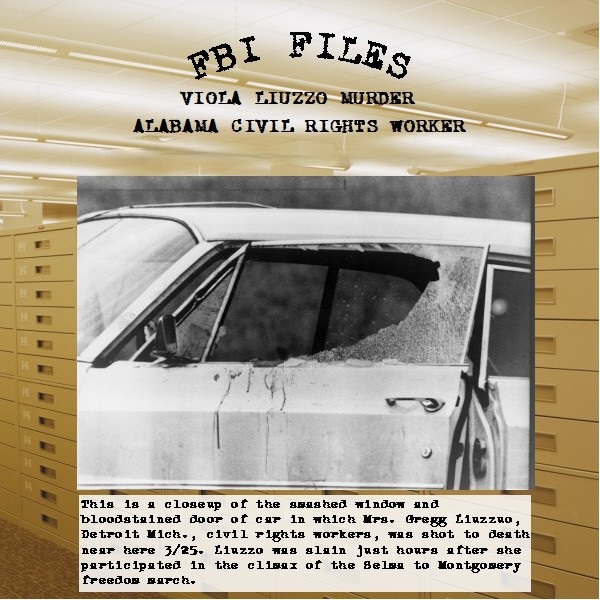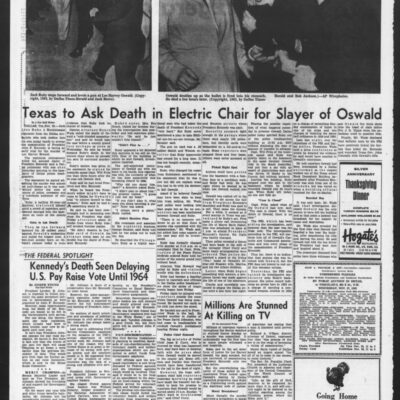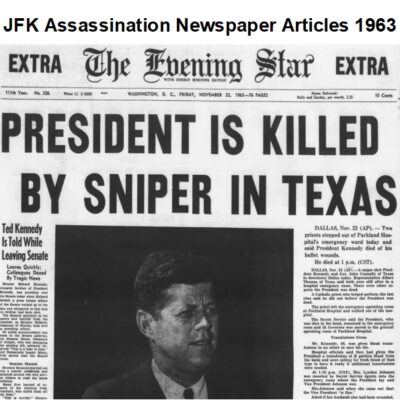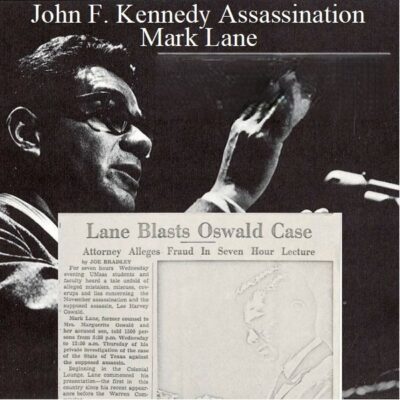
Viola Liuzzo Murder – Alabama KKK FBI Files – President Johnson Secret Phone Recordings
$19.50
Description
Selma to Montgomery and the Murder of Viola Liuzzo
Detailed Timeline of Events
- 1963: Civil rights activists begin an effort to register Black voters in Dallas County, Alabama.
- 1963-1964: Hundreds of potential Black voters are brought to the registrar’s office in Selma, but they are largely unable to register.
- January-February 1965: Protests are held in Selma to draw attention to the violation of voting rights.
- February 17, 1965: A small civil rights march ends in the shooting of Jimmy Lee Jackson.
- Several days after February 17, 1965: Jimmy Lee Jackson dies from his wounds.
- March 7, 1965 (“Bloody Sunday”): Approximately 600 civil rights marchers begin a memorial march from Selma to Montgomery. They are violently confronted by Alabama state troopers and Dallas County Sheriff’s deputies at the Edmund Pettus Bridge, resulting in numerous injuries.
- March 21, 1965: Following a federal lawsuit and court order, the Selma to Montgomery march begins again, this time with federal troop protection.
- Late March 1965: The Selma to Montgomery march reaches the state capitol in Montgomery, where a rally is held.
- March 25, 1965: Viola Liuzzo, a white civil rights worker from Detroit who came to Alabama to help with voter registration, is murdered while en route to a civil rights meeting after being seen riding in a car with Leroy Moton, a Black man.
- May 1965: The trial of Eugene Thomas, Collie Leroy Wilkins, Jr., and William Orville Eaton for the murder of Viola Liuzzo begins. An all-white jury fails to reach a verdict, and a mistrial is declared.
- October 1965: A second state trial for the murder of Viola Liuzzo results in the acquittal of the defendants.
- Later in 1965 (specific month not given): In a federal trial, Eugene Thomas, Collie Leroy Wilkins, Jr., and William Orville Eaton are found guilty of conspiracy to violate the civil rights of Viola Liuzzo and are sentenced to ten years in prison.
- March 9, 1966: William Orville Eaton dies from natural causes before serving his sentence.
Cast of Characters
- Viola Gregg Liuzzo (1925-1965): A 39-year-old white mother and civil rights worker from Detroit. She traveled to Alabama to participate in voter registration efforts and was murdered on March 25, 1965, becoming the first white woman killed during the American civil rights movement.
- Leroy Moton: A Black man who was seen riding in a car with Viola Liuzzo shortly before her murder.
- Eugene Thomas: Allegedly one of the KKK members involved in the murder of Viola Liuzzo. He was tried multiple times and eventually found guilty in federal court for conspiracy to violate her civil rights.
- Collie Leroy Wilkins, Jr.: Allegedly one of the KKK members involved in the murder of Viola Liuzzo. He was tried multiple times and eventually found guilty in federal court for conspiracy to violate her civil rights.
- William Orville Eaton: Allegedly one of the KKK members involved in the murder of Viola Liuzzo. He was tried multiple times, found guilty in federal court for conspiracy to violate her civil rights, and died before serving his sentence.
- Anthony Liuzzo: The husband of Viola Liuzzo. President Johnson had phone conversations with him regarding his wife’s murder.
- Lyndon B. Johnson: The President of the United States during the Selma to Montgomery marches and Viola Liuzzo’s murder. He took a keen interest in the case and had recorded phone conversations about it.
- J. Edgar Hoover: The Director of the Federal Bureau of Investigation (FBI). He participated in phone conversations with President Johnson regarding the Liuzzo murder investigation.
- Nicholas Katzenbach: The United States Attorney General during this period. He was also involved in phone conversations with President Johnson concerning the Liuzzo case.
- Lee White: A civil rights advisor to President Johnson. He participated in phone conversations related to the Liuzzo murder.
- Jimmy Hoffa: The President of the Teamsters Union. He was part of President Johnson’s recorded phone conversations related to the Liuzzo case.
- Jack Valenti: An advisor to President Johnson. He was involved in phone conversations concerning the Liuzzo murder.
- Adam Clayton Powell: A Congressman who participated in phone conversations with President Johnson related to the Liuzzo murder.
- George Wallace: The Governor of Alabama during the civil rights movement. His response to Viola Liuzzo’s murder is mentioned as part of the FBI file coverage.
- James Clark: The Sheriff of Dallas County, Alabama. His deputies were involved in the violent suppression of the “Bloody Sunday” march in Selma.
- Jimmy Lee Jackson: A civil rights activist who was shot by law enforcement during a small march in February 1965 and died several days later. His death prompted the Selma to Montgomery march.
- Martin Luther King Jr.: A prominent leader of the civil rights movement. He and his supporters organized and participated in the Selma to Montgomery marches and filed a federal lawsuit to protect the marchers’ right to protest.
Viola Liuzzo Murder – Alabama KKK FBI Files – President Johnson Secret Phone Recordings
1,575 pages of files copied from FBI Headquarters in Washington, D.C., covering the investigation of the Viola Liuzzo murder.
Viola Gregg Liuzzo (1925-1965) was a 39-year-old white mother and a civil rights worker from Detroit who came to Alabama to help with voter registration. She was murdered March 25, 1965 en route to a civil rights meeting, after being seen riding in a car with Leroy Moton, a black man. She was the first white woman killed during the American civil rights movement.
Her murder was allegedly committed by KKK members Eugene Thomas, Collie Leroy Wilkins, Jr. and William Orville Eaton.
In May 1965, the trial of Liuzzo’s killers began, but the all-white jury could not come to a decision and a mistrial was declared. At a second trial in October 1965, the men were found not guilty of murder. In a federal trial, the defendants were found guilty of conspiracy to violate the civil rights of Liuzzo and were sentenced to ten years in prison. Eaton died on March 9, 1966, from natural causes, before serving his sentence.
FBI File coverage includes a background investigation of Viola Liuzzo and her husband; Accounts from informants within the Klan; President Johnson’s interest in the case; Alabama Governor George Wallace’s response to the murder.
President Johnson Phone Conversation Secret Audio Recordings
45 minutes of phone conversation audio recorded by Lyndon Johnson, containing conversations related to the Liuzzo murder. Participants include:
FBI Director J. Edgar Hoover
Anthony Liuzzo husband of Viola Liuzzo
United States Attorney General Nicholas Katzenbach
Johnson civil rights advisor Lee White
Teamster President Jimmy Hoffa
Johnson advisor Jack Valenti
Congressman Adam Clayton Powell
In 1963, civil rights activists began an effort to register black voters in Dallas County, Alabama. During 1963 and 1964, although they brought potential voters by the hundreds to the registrar’s office in the courthouse in Selma, they were unable to have them registered. In January and February 1965, protests were held in Selma to bring attention to this violation of rights. The protests were met by violence by Sheriff James Clark and his deputies. On February 17, a small civil rights march ended in the shooting of Jimmy Lee Jackson who died from his wounds several days later. The civil rights activists decided to hold a memorial march from Selma to the state capitol in Montgomery on March. 7.
Approximately 600 marchers started out on the march that Sunday morning. When the marchers crossed the Edmund Pettus bridge on the outskirts of Selma, they were met by about 200 state troopers, and Sheriff Clark and his deputies mounted on horseback, armed with tear gas, night sticks and bull whips. The marchers were ordered to turn back. When they did not, they were attacked by the law enforcement officers. The air filled with tear gas and marchers were beaten, whipped and trampled by the horses. Finally, they turned around and returned to Selma. Seventeen marchers were hospitalized.
Dr. King and his supporters filed a federal lawsuit requesting to be permitted to proceed with the march. On March 21, the march began again, with federal troops protecting the marchers, and proceeded to Montgomery. In Montgomery, a rally was held on the steps of the state capitol. However, within hours of the end of the march Liuzzo was killed.






